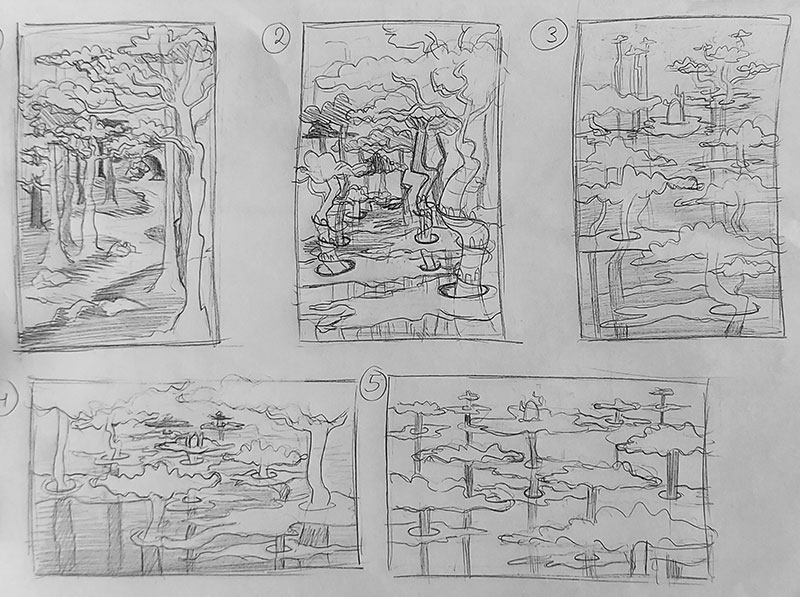Guide to Thumbnail Sketches

There are many benefits of thumbnail sketches: they can save you time when working on a final piece of artwork and allow you to explore more options for composition.

The demonstration shows simple strategies on how to crop or expand your thumbnail sketches and how to diversify your options.
Demo and discussion led by Art Prof Clara Lieu and Teaching Artist Cat Huang.

Video Walkthrough
- Thumbnails will save you time!
- Planning out compositions is more efficient.
- You can work out mistakes in thumbnails very quickly.
- Thumbnails need to be small, about palm sized.
- Don’t add details to thumbnails
- Industries like editorial illustration require thumbnails.
- Start with about 5 thumbnails.
- Use any media that is useful to you in your thumbnails.
- Be sure the aspect ratio of your thumbnail matches the final art.
- Don’t draw a grid and fill in your compositions, it’s too confusing.
- Draw a literal rectangle for each thumbnail with space around it
- “The first mark is the 5th mark.”
- Tweak your thumbnails by cropping and expanding.
- Mixing digital and traditional media for thumbnails is useful.
- Viewfinders are a concrete, physical way to see composition.
- Larger sketches that show value and color can help with the final art.
- Getting feedback on your thumbnails from others is useful.

“I think it’s somewhat a time management thing; if you can get lots of thumbnails out, you’re actually targeting the objective with the thumbnails so that you can get to the final painting quicker.
If your thumbnails aren’t really focused on the composition, and you’re thinking about color and brush technique, in a way that’s delaying your ability to get to the final piece.“
Prof Lieu





